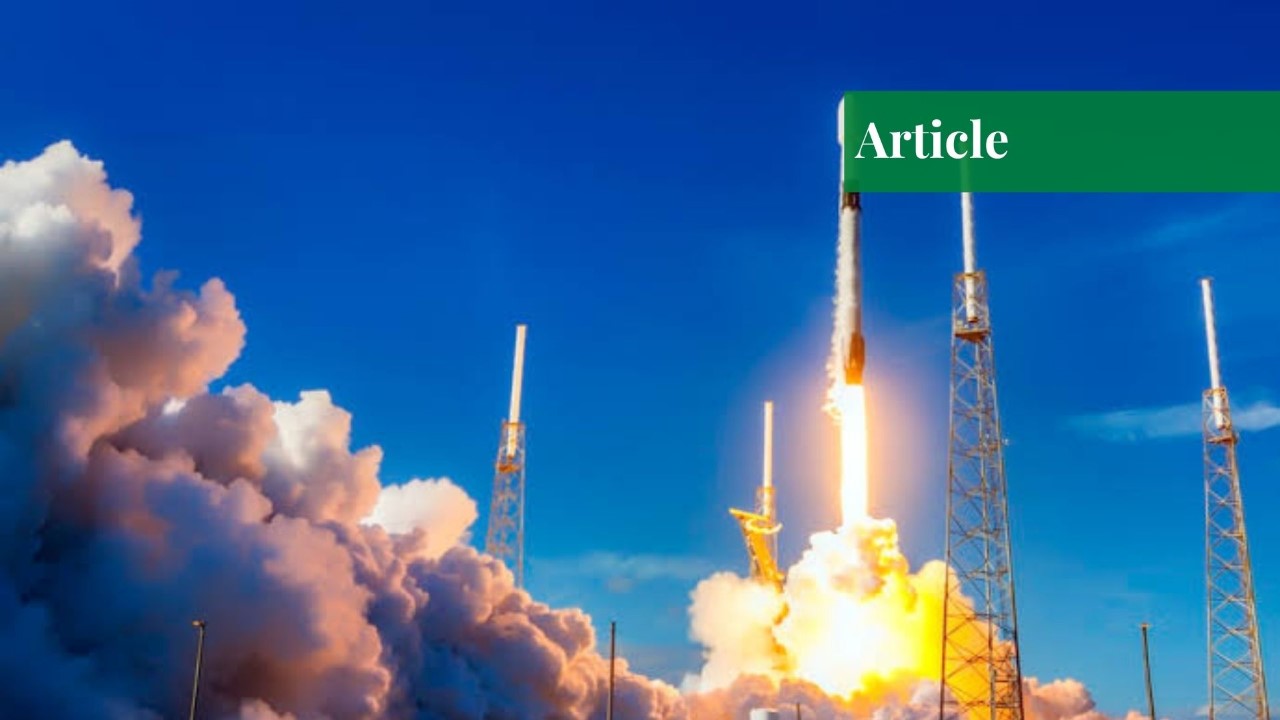The Past
The space race was an extension of the Cold War of the 20th-century struggle for supremacy in aerospace capabilities. The space-based rivalry had roots in the missile-based arms race in WWII between USSR and the US. Dominance in the technological field was important for national security. War in space was the subject of extreme fiction at that time. However, in a short period, the space race became a zone of conflict and has remained so in the 21st century.
A Race to the Stars
On October 4, 1957, the Space Age began with the launch of Sputnik 1 by the USSR, which was the world’s first man-made object to be placed in the earth’s orbit and the first artificial satellite. This event had an extraordinary impact on humans. With time, the Soviet Union made great developments like sending the first dog Laika into space, the first probe, the first spacecraft, Yuri Gagarin, the first person to enter earth’s orbits, and many other firsts.
This promised the Soviets to emerge victorious on many fronts. The US, too, moved towards introducing two national security-oriented space programs. In 1958, the National Aeronautics and Space Administration (NASA) formally came into being. President John F. Kennedy publicly announced their program for landing a man on the moon, which was a pivotal moment in the space race.
Moon Race
From the 1960s to the 1970s, other countries including Canada, France, China, and Japan launched their own space satellites and rockets. However, the most remarkable and page-turning event in mankind’s history was America’s Apollo program launched by NASA. The national goal set by John Kennedy in his famous ‘Moon speech’ was fulfilled in 1969.
On 20 July 1969, during Apollo 11 mission, Edwin Aldrin and Neil Armstrong became the first humans to land on the moon. They walked on its surface after four days of their launch. Although three astronauts were a part of this project (Michael Collins staying on board in the lunar orbit), Neil Armstrong was the first one to exit his lunar module and therefore the first man.

It was certainly the peak moment in this race to the stars and moon. This also promised the United States a victory in the Cold War Space Race. Many consider Armstrong’s landing on the Moon as an end to this struggle. Relations between the two countries took a positive turn in the early 1970s, in the period of “detente”.
This phase of renewed cooperation emerged when the countries were pushing for new limits in spaceflight. It formally ended on July 17, 1975, when both competing arch-rivals cooperated for humanity’s first international space mission. The US and USSR docked two spacecraft together during their Apollo-Soyuz mission.
In the Apollo spacecraft, three US astronauts docked in orbit with a Soviet-made Soyuz. The ‘handshake in space’ between the two commanders marked a historic symbolization of gradual improvement in their relations. Peace in space was brief – later, the Cold War hostilities reemerged.
The ideological conflict gave the propulsion to race towards far-reaching innovations, but with the ending of this global conflict, the incentives for space research decreased.
The Present Century
Given the changing threat landscape of the 21st-century and terrorism at its peak, the space race became a secondary priority for the US. This period allowed for China’s rise and Russia’s resurgence. American civil and military space both struggled. It remained the world leader but the reigning position diminished with the new actors. Since the 1990s, NASA’s spending has waned, but an increase in commercial and private sector investment in space has been witnessed.
However, under President Donald. J Trump, the spatial realm saw dramatic changes. The creation of the military branch, US Space Force were some of the important developments. Joe Biden’s administration announced its support for this. Russia again started to reconstitute its former space glory. Under Vladimir Putin, gaps in military constellations were plugged; there was a revival of the country’s GPS (GLANOSS) and they started working on several counter-space programs.
In the words of French space expert Bertrand de Montluc, “Russia was undergoing a remarkable resurgence.” Under President Dmitri Medvedev, the country also took steps for the formation of a start-up sector. The collective impact of Western sanctions due to its seizure of Crimea and intervention in Ukraine, the declining oil and gas revenues, and increased corruption led to major hurdles in its space program. In 2015, Russia formed its Space Force as an autonomous command within the Ministry of Defense.
China’s Participation
China had not participated in the space race, but it had started developing its program in 1950. It was in the 1980s that it started to emerge as a fledgling space power. After several unmanned attempts, China was able to send its first taikonaut (a Chinese astronaut) to space in 2003. This was the third time that a country was able to send a human into the Earth’s orbit and ensure a safe return.
With a series of successes, China showed a strong determination of creating an offensive military space capability. It has also surpassed the GPS (BeiDou) development with the creation of 30 satellites by 2020. However, the commercial sector is the only area where China is behind the other space players.
China also formed its Space force, the Strategic Support Force (SSF), in 2015, as a part of the PLA (People’s Liberation Army). The market remains modest. Overall, from 2002 to 2017 marked great achievements for the Chinese space program.
New Actors
Currently, India, Japan, and France are among the strong space actors. France has its own French Space Command similar to the US Space Force. Then there is the European Space Agency which permitted the European countries to develop their own technologies. Actors of the private sector, too, have contributed largely to reshaping space activities. Elon Musk’s Space X, Jeff Bezos’ Blue Origin, and Virgin Galactic are top private companies exploring the arena.
The Future
The US
Though the past performance of America has remained slow with a flat NASA budget, the country is still leading in terms of absolute space power capabilities. The space marketplace is already producing revolutionary services and products that are from these innovative start-ups. Companies like SpaceX have already made remarkable and successful launches.
The US has presently been more engaged in forming military space alliances. Global SATCOM, a service that provides bandwidth in exchange for financial funding, demonstrates this. However, the decreased NASA budget has affected the civil space sector, so there is a lack of funding for manned missions.
Russia
The Russian spatial performance is facing several problems. Its politics dictating the program and the increasing isolationism from the space community have exacerbated its issues. The international space market has changed from the time of the Cold War. Now, it is difficult for Russia because of high Western prices.
High dependence upon the US for electronic parts of current-generation satellites made it complex for the country’s space program to function properly after the sanctions. Russia has also emerged as one of the least-friendly nations for start-ups. In my opinion, the country may be resurgent as another space power but would need a steady financial budget and a change in its staunch nationalist stance for it to succeed.
China
China’s slow but steady rise in the space industry is growing faster day by day. However, the country’s majority of spatial activities are state-run or military-controlled. Defense analyst Richard Bitzinger describes China as a space player that has been a ‘fast-follower’ rather than an ‘innovator’. The companies have to comply with the government, and an outdated administrative management model is seen.
China’s dependence on foreign components places it several steps behind the US. More political reforms are needed to stimulate bottom-up innovation. From my point of view, the country may be facing complicated obstructions, but knowing China, it will continue to advance and develop rapidly.
The current trends of the three major leading spacefaring nations discussed above make space wars, or a space race, inevitable in the near future. Though the space race between these states would be different from the one during the Cold War. With the US-China rivalry in the quest for global hegemony anticipated by many, space may become for the second time a battleground of opposing ideologies.
As private companies are also now among the space players, a complex set of actors in this future race would make warfare intricate. The US still is the superior actor because of China and Russia’s great dependence on America for space-related technology. Complex interdependence between these nations paints a complicated picture. However, if war was to start, the warring parties would go to every extent to achieve their interests as illustrated in the Cold War.
If you want to submit your articles, research papers, and book reviews, please check the Submissions page.
The views and opinions expressed in this article/paper are the author’s own and do not necessarily reflect the editorial position of Paradigm Shift.



















